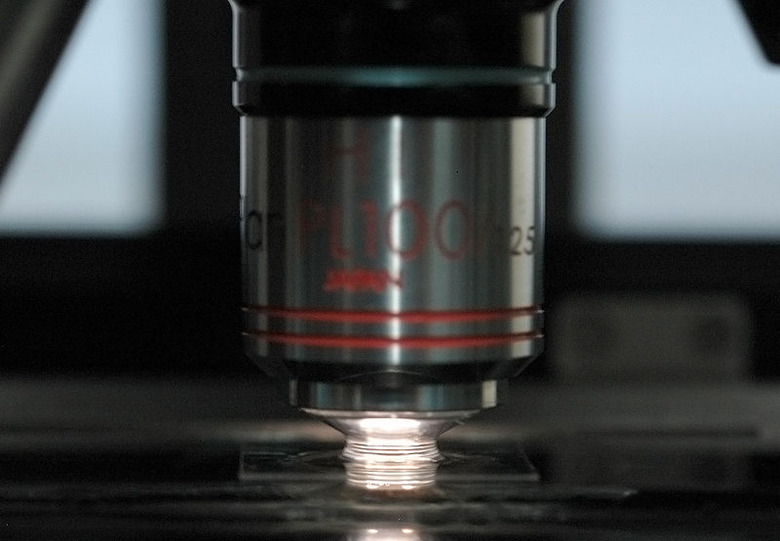How To Store A Microscope
Microscopes are very sensitive scientific instruments that allow us to look at items using magnification. They must be handled and cared for carefully at all times, even when they are not being used, to ensure that they continue to perform at a high level. To extend the life of your microscope, store it wisely. Because dust can scratch the lens of a microscope and interfere with the magnification process, the main objective of storing a microscope is to keep it protected from dust and other elements.
Step 1
Wash and dry your hands to be certain that you're not transferring any dirt or dust to the microscope.
Step 2
Turn the microscope off or at least be sure that it is operating on the lowest possible magnification setting.
Step 3
Clean the body and all surfaces except for the lenses using a can of compressed air. If necessary, the tube, arm, stage and base can also be wiped with a damp or dry lint-free cloth. Clean lenses thoroughly, using lens cleaning solution and lens cleaning papers. Lens cleaning papers and solution can be found at camera supply stores.
Step 4
Turn the lenses so that they are facing the stage, or the tray where slides are placed to view items through the lenses.
Step 5
Cover the microscope with a plastic microscope cover. If the cover has zippers or buttons to seal it shut, make sure these are buttoned or zipped correctly.
Step 6
Store the microscope on a flat table or surface where it will not be jostled or knocked over. Ensure that the storage area does not expose the microscope to prolonged periods of direct sunlight.
Things Needed
- Microscope cover
- Lens paper
TL;DR (Too Long; Didn't Read)
For an added layer of protection, store the covered microscope in a plastic tub with a lid on it and store the tub on a flat surface.
Cite This Article
MLA
Gilbert, Darci Anne. "How To Store A Microscope" sciencing.com, https://www.sciencing.com/store-microscope-4884280/. 24 April 2017.
APA
Gilbert, Darci Anne. (2017, April 24). How To Store A Microscope. sciencing.com. Retrieved from https://www.sciencing.com/store-microscope-4884280/
Chicago
Gilbert, Darci Anne. How To Store A Microscope last modified March 24, 2022. https://www.sciencing.com/store-microscope-4884280/
